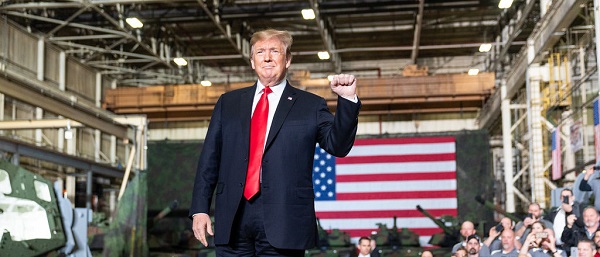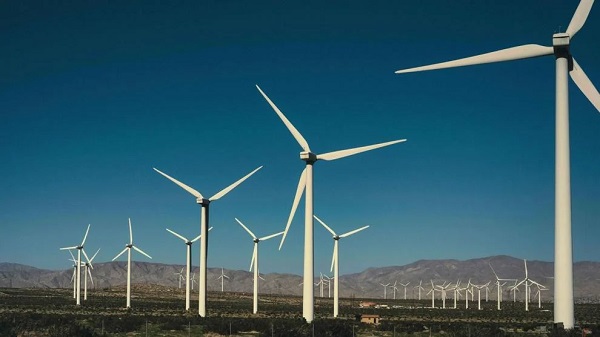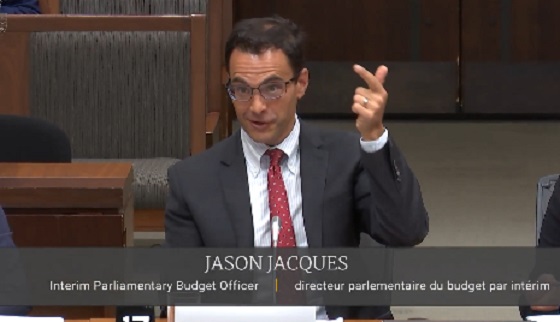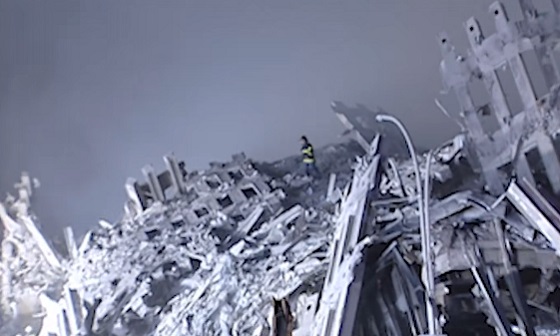Economy
US strategy to broker peace in Congo and Rwanda – backed by rare earth minerals deal

 MxM News
MxM News
Quick Hit:
Senior Trump advisor Massad Boulos says the U.S. is brokering a peace deal between the Democratic Republic of the Congo (DRC) and Rwanda that will be paired with “Ukraine-style” mineral agreements to stabilize the war-torn region.
Key Details:
-
The U.S. wants Congo and Rwanda to sign a peace treaty and, on the same day, finalize critical mineral supply deals with Washington. Boulos told Reuters that both deals are expected within two months.
-
Rwanda’s side of the treaty involves halting support for M23 insurgents, while the DRC has pledged to address Rwanda’s concerns about the Hutu-dominated FDLR militant group.
-
DRC President Tshisekedi has floated the idea of giving the U.S. exclusive access to Congolese minerals in exchange for help against M23. “Our partnership would provide the U.S. with a strategic advantage,” he wrote in a letter to President Trump.
Diving Deeper:
According to a Thursday report from Reuters, President Donald Trump’s administration is accelerating efforts to finalize a dual-track strategy in central Africa—pushing for a peace agreement between the Democratic Republic of the Congo and Rwanda, while simultaneously brokering “Ukraine-style” mineral deals with both nations.
Massad Boulos, Trump’s senior adviser on Africa, told Reuters that the administration expects the mineral agreement with Congo to be signed on the same day as the peace treaty, followed shortly by a separate deal with Rwanda. “The [agreement] with the DRC is at a much bigger scale, because it’s a much bigger country and it has much more resources,” Boulos explained, while noting Rwanda’s potential in refining and trading minerals is also significant.
The DRC and Rwanda have set a tight timetable, agreeing to exchange draft treaty proposals on May 2nd and finalize the accord by mid-May. Secretary of State Marco Rubio is scheduled to preside over the next round of negotiations in Washington.
Rwanda’s cooperation hinges on its withdrawal of support for M23 rebels, who have taken over key territories in eastern Congo. These insurgents have even paraded through captured towns alongside Rwandan troops, prompting international condemnation. In return, Congo has committed to addressing Rwanda’s longstanding concern over the presence of the FDLR—a militant group composed largely of Hutu fighters accused of plotting to overthrow Rwanda’s Tutsi-led government. The FDLR has been active in the region for years and remains a major point of contention.
The instability in eastern Congo—home to over a hundred armed groups—has prevented investors from tapping into the country’s vast mineral wealth. The DRC holds an estimated $24 trillion in untapped resources, including cobalt, copper, lithium, and tantalum, all essential for advanced electronics, renewable energy systems, and defense applications. Boulos emphasized that no deal will go forward unless the region is pacified: “Investors want security before they invest billions.”
Reports suggest M23 has seized control of major mining operations, funneling stolen minerals into Rwanda’s supply chain. Though the UN’s peacekeeping mission, MONUSCO, was designed to stabilize the region, it has been ineffective during this latest wave of violence. President Tshisekedi asked the mission to withdraw last year, and several countries—including South Africa, Malawi, and Tanzania—are now pulling their peacekeepers after M23 captured the regional capital of Goma in January.
Red Cross teams began evacuating trapped Congolese soldiers and their families from rebel-held areas on Wednesday. At least 17 UN peacekeepers have been killed so far this year.
In a March letter to President Trump, President Tshisekedi made his case for a strategic partnership, offering exclusive U.S. access to Congo’s mineral wealth in exchange for American support against the insurgency. “Your election has ushered in the golden age for America,” he wrote, describing the proposed deal as a “strategic advantage” for the United States.
Boulos, who has longstanding business ties in Africa, quickly visited the DRC following the letter and began working to finalize the terms of the proposed agreement.
Business
Department of Energy returning $13B climate agenda funding to taxpayers

From The Center Square
By
The U.S. Department of Energy will be returning to American taxpayers $13 billion in “unobligated wasteful spending” that was originally intended for former President Joe Biden’s climate agenda.
In response, Larry Behrens from Power the Future told The Center Square that “by returning $13 billion, the Department of Energy under President Trump is showing respect for taxpayers and a willingness to end funding for programs that don’t work.”
Power the Future is a nonprofit dedicated to Americans who work in reliable energy sources.
Behrens told The Center Square that the Department of Energy’s action “is a welcome step toward restoring accountability and letting free markets – not bureaucrats – determine our energy future.”
“The American people made it crystal clear at the ballot box that they don’t want another taxpayer dollar wastefully spent on green scam pet projects,” Behrens said.
Diana Furchtgott-Roth of the Heritage Foundation told The Center Square that with the return of $13 billion, “the deficit will be lower than otherwise.”
When asked what other actions the Department of Energy should take to end wasteful spending, Furchtgott-Roth said that “the Department should comb through its budget and see what projects can be accomplished by the private sector, then end those projects.”
“The Department should also look through its regulations and see which ones impose costs on businesses and families,” Furchtgott-Roth said.
“For instance, the Department should eliminate appliance regulations that prevent companies from producing the gas stoves, boilers, or water heaters that people want to buy,” Furchtgott Roth said.
The Department of Energy announced Wednesday its “intention to return more than $13 billion in unobligated funds initially appropriated to advance the previous Administration’s wasteful Green New Scam agenda.”
The department said its announcement reflects “the [Trump] Administration’s commitment to halt wasteful spending and refocus the department to its core mission.”
For instance, Trump signed the Working Families Tax Cut into law earlier this year, the release said, which “directed the Energy Department to rein in bloated federal spending and expedite the return of unobligated funds to the U.S. Treasury to support hardworking Americans.
“The Department of Energy is working to advance its critical mission of unleashing affordable, reliable and secure energy for all Americans while increasing efficiency and promoting better stewardship of taxpayer dollars,” the release said.
The Department of Energy has not yet responded to The Center Square’s request for comment.
U.S. Secretary of Energy Chris Wright said in the news release: “The American people elected President Trump largely because of the last administration’s reckless spending on climate policies that fed inflation and failed to provide any real benefit to the American people.”
“Thanks to President Trump and Congress, those days are over,” Wright said.
Renewable energy group American Council on Renewable Energy has not yet responded to The Center Square’s two requests for comment.
Behrens told The Center Square, “keep in mind it was Biden’s DOE that funneled billions to an electric vehicle charging program that failed to deliver results.”
“Over $6 billion in EV charging funding has now been flagged as wasteful,” Behrens said.
Behrens also referred The Center Square to a White House document entitled “Ending the Green New Scam.”
Furchtgott-Roth informed The Center Square that “in general, states with the most expensive electricity require renewables (with the exception of Alaska), and states with the least expensive electricity do not require renewables.”
“States should prioritize affordable, resilient, reliable energy,” Furchtgott-Roth said.
“This means getting rid of requirements that a share of electricity be produced with renewables,” Furchtgott-Rott said.
Business
“If you don’t change, this is dying.” PBO warns Carney’s massive deficits are an extinction level threat

“STUPEFYING, SHOCKING . . . if the [Carney Liberals] don’t change… THIS IS DONE.”
In all our years serving as Canada’s pioneering conservative advocacy organization, we’ve never seen a warning this dire from a Parliamentary Budget Officer.
Interim Budget Officer Jason Jacques isn’t just sounding the alarm, he’s potentially putting his position in the public service on the line to communicate this dire threat.
"STUPEFYING, SHOCKING . . . if the [Carney Liberals] don't change… this is done." 🚨🇨🇦
The government's true deficit is $68.5 billion, 62% HIGHER than predicted, reports Interim Budget Officer Jason Jacques.
He's sounding the alarm as loud as he can. pic.twitter.com/42u1sXDm2c
— National Citizens Coalition (@NatCitizens) September 26, 2025
This is a moment of incredible concern. The Liberal government’s true deficit is believed to be 62% HIGHER than previously predicted. That’s not “investment,” as the Liberals and their press have so shamelessly attempted to rebrand debt and YOUR tax dollars.
“It’s a really serious fiscal outlook.
“And we don’t lightly use the word unsustainable, Right?
“Unsustainable means you don’t have the option of saying, maybe I’ll wait a couple of years, I’ll see how things go.
“…And I think, as anyone who’s managed a household budget knows, if you sit down at the end of the month and you don’t have enough money to pay your bills, and it happens month after month after month, you know that something’s going to break.”
Mark Carney is being given failing report cards for a reason. This is beyond unsustainable, and while he can hide from harsh domestic realities overseas on the global stage, Canadians and their pocketbooks can’t.

This moment is urgent. On the economy, trade, domestic issues like immigration and crime and chaos, foreign policy, governance, and major projects, the Liberals are deserving of nothing but an F.
Some fell for the promise of better. So far, they’ve been fooled.
MILLIONS need to know the truth about this Liberal-made financial disaster. Help us reach them. Help us turn the polls, force change, and hold these economic arsonists to account.
If we do nothing, this gets worse. If this gets worse… “THIS IS DONE.”
Thank you for joining us in this dire moment for urgency and action!
Sincerely,
Peter Coleman
President
National Citizens Coalition
Alexander Brown
Director
-

 armed forces1 day ago
armed forces1 day agoSecretive Lockheed Martin Skunk Works reveals latest high-tech military drone
-

 International23 hours ago
International23 hours agoEverything has changed. Again.
-

 Business2 days ago
Business2 days agoGun Buyback Program creating criminals out of law abiding citizens and directing police away from actual crime
-

 Opinion1 day ago
Opinion1 day agoThe City of Red Deer’s financial mess – KPMG report outlines failure of council to control spending
-

 Business23 hours ago
Business23 hours ago“If you don’t change, this is dying.” PBO warns Carney’s massive deficits are an extinction level threat
-

 Energy2 days ago
Energy2 days agoHere’s a list of ways the Carney government can unshackle Canada’s energy sector
-

 Business1 day ago
Business1 day agoTrump approves deal for majority-American control of controversial app TikTok
-

 Daily Caller1 day ago
Daily Caller1 day agoFBI Deployed Nearly 300 Agents On Jan 6 As ‘Pawns In A Political War’







